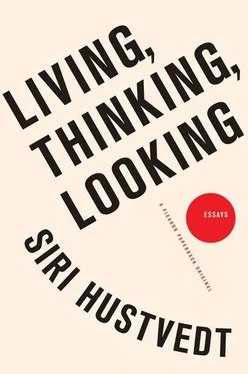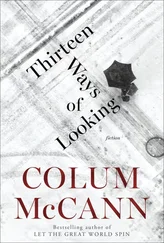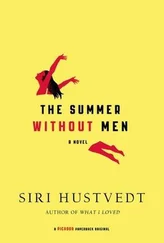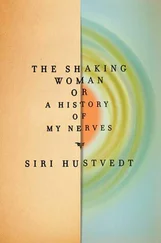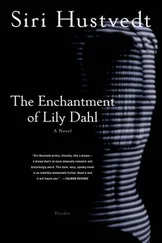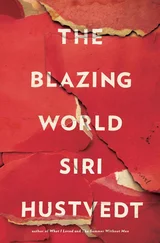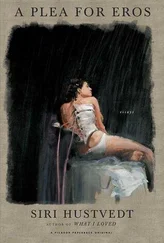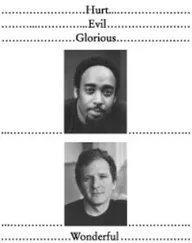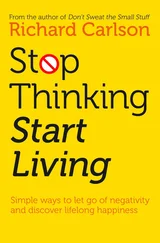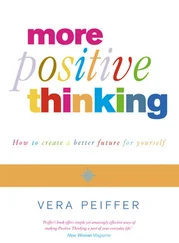During this interval, I have often had the illusion that I am walking. I feel my foot slip off a curb and fall, but before I hit the pavement, I feel a jerk and am fully awake again. I also watch brilliant mutating spectacles on my closed eyelids, hypnagogic hallucinations, that usher me into sleep. Sometimes I hear voices speak a single word or a short emphatic sentence. In Speak, Memory , Vladimir Nabokov tells about his own visual and auditory semi-oneiric phenomena. “Just before falling asleep I often become aware of … a neutral, detached anonymous voice which I catch saying words of no importance to me whatever — an English or Russian sentence.” He, too, had visions, often “grotesque,” that preceded sleep. Although hypnagogic hallucinations are poorly studied except in relation to narcolepsy, many people without that affliction report seeing pictures or just colors and shadows when they linger at the threshold of sleep. What distinguishes these experiences from dreams proper is awareness, a kind of double reality. As Nabokov writes of his images, “They come and go without the drowsy observer’s participation, but are essentially different from dream pictures for he is still master of his senses.” 2
When I have insomnia, I cannot drop into this peculiar zone between waking and sleeping — this half-dreaming, half-aware state of words and pictures does not arrive. As Jorge Luis Borges observes in his poem “Insomnia”: “In vain do I await/ the disintegration, the symbols that come before sleep.” 3My internal narrator, the one who is speaking in my head all day long, refuses to shut up. The day-voice of the self-conscious thinker races along heedless of my desire to stop it and relax. Chaucer’s narrator seems to have a similar problem: “Suche fantasies ben in myn hede, / So I not what is best to doo.” 4And so, like many insomniacs before and after him, he picks up a book and begins to read.
I was thirteen when I had my first bout of sleeplessness. My family was in Reykjavík, Iceland, for the summer, and day never really became night. I couldn’t sleep, and so I read, but the novels I was reading only stimulated me more, and I would find myself wandering around the house with rushing fragments of Dickens, Austen, or the Brontës whirring in my head. It is tempting to think of this form of insomnia, the inability to fall asleep, as a disease of agency and control, the inability to relinquish high self-reflexive consciousness for the vulnerable, ignorant regions of slumber when we know not what we do. In On the Generation of Animals, Aristotle regards sleep as a between-world: “… the transition from being to not-being to being is effected through the intermediate state, and sleep would appear to be by its nature a state of this sort, being as it were a borderland between living and not-living: a person who is asleep would appear to be neither completely non-existent nor completely existent…” 5Sleep as nearer to death than waking or, as Banquo calls it in Macbeth, “death’s counterfeit.”
In sleep we leave behind the sensory stimulation of the outside world. A part of the brain called the thalamus, involved in the regulation of sleeping and waking, plays a crucial role in shutting out somatosensory stimuli and allowing the cortex to enter sleep. One theory offered to explain hypnagogic hallucinations is that the thalamus deactivates before the cortex in human beings, so the still active cortex manufactures images, but this is just a hypothesis. What is clear is that going to sleep involves making a psychobiological transition. Anxiety, guilt, excitement, a racing bedtime imagination, fear of dying, and pain or illness can keep us from toppling into the oneiric underworld. Depression often involves sleep disturbances, especially waking up early in the morning and not being able to get back to sleep. Weirdly enough, keeping a depressed patient awake for a couple of nights in the hospital can alleviate his symptoms temporarily. They return as soon as he begins to sleep normally again. On the rare occasion that I have had both a migraine headache and suffered from a whole night of insomnia, I have found that the insomnia appears to cure the migraine. No one understands how either depression or migraine are related to, or overlap with, the sleep cycle.
Chaucer’s insomniac reads Ovid’s The Metamorphosis . It does not put him to sleep. He gets very interested in it and spends many lines reporting on his reading. I read in the afternoons now, never at night, because books enliven the internal narrator to one vivid thought after another. No doubt my obsessive reading kept me up that summer long ago, but the permanent daylight of Reykjavík in June must have played havoc with my circadian rhythms, my normal twenty-four-hour wake/sleep cycle and, without darkness, my body never fell into the borderland that would carry me into slumber. When I look back on it, I think I was more anxious about not sleeping than about anything else I can name, and this is still often the case when I am seized with a fit of wakefulness. I am lucky it doesn’t happen often. It is bitter to hear the birds.
2. WHY SLEEP?
Waking and sleeping are the two sides of being. Aristotle put it this way: “It is necessary that every creature which wakes must also be capable of sleeping, since it is impossible that it should be always actualizing its powers.” 6This makes sense. We know that we have to sleep. We know sleeplessness makes us cranky, stupid, and sad. And yet, why we sleep, why we dream, and even why we are wakeful — conscious — remain mysteries. In The Meditations René Descartes asked if he could be certain he was even awake. “How often, asleep at night, am I convinced that I am here in my dressing gown, sitting by the fire when in fact I am lying undressed in bed!.. I see plainly that there are never any sure signs by means of which being awake can be distinguished from being asleep.” 7Dreamless sleep gave Descartes a further problem. It followed from his cogito ergo sum that the apparent thoughtlessness of deep imageless sleep would mean an end to human existence. He was forced to postulate that both waking and sleeping states are conscious, even those periods when we don’t dream at all. John Locke found this ridiculous and came to the opposite conclusion: dreamless sleep is not part of the self, because there is nothing to remember, and personal identity is made of memories. Most of us accept the fact that although we may believe our dreams to be real events when asleep, upon waking in the morning in the same place, we can tell the difference between nocturnal hallucination and reality. But what is sleep and why do we need it? Who are we when we sleep? What exactly does the insomniac crave?
Until the middle of the twentieth century, most researchers agreed that fatigue led to reduced brain activity in sleep, that sleep was, by and large, a dormant state of mind. But this was proved wrong. In REM (rapid eye movement) sleep, brain activity compares to that of full wakefulness. Indeed, sometimes neural firing is more intense than when we’re awake. The old answer was: that’s because we’re dreaming. But the hard and fast equation between REM sleep and dreaming has been overturned, although the debates go on about exactly what this means. There are dreams during the non-REM phase of sleep as well. What waking consciousness is and what it’s for is also a mystery, although there are many competing theories. Does sleeping help consolidate our memories? Some scientists say yes. Some say no. Do dreams mean anything? There are people involved in dream research who say yes, Freud was essentially right, or right about some aspects of dreaming. Others who say no, dreams are mental refuse, and still others who say they have meanings but not as Freud thought they did. What is the evolutionary purpose of consciousness, of sleep, of dreams? There is no agreement.
Читать дальше
